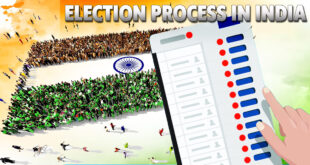Today, we are under the dangerous influence of a new form of illiteracy. According to the Census, “a person aged seven and above, who can both read and write with understanding in any language, is treated as literate.” We are now seeing a form of illiteracy creeping on those who are literate and this has to do with the term “understanding” in the above definition. Today, under the influence of digital technologies and a dominant visual culture, are we reading (and seeing) with less understanding? The art of reading This new form of illiteracy has to do with certain incapacities of reading and writing. Reading is matter of fact and habitual; yet it has many hidden dimensions to it. Reading is more than seeing words. It is about making sense of words, about discovering and constructing meaning. The meaning of the words we read are not gathered from dictionaries alone. They are also created from our memories and experiences. The meaning of every sentence is dependent on the context in which it is used. If reading is so complex, how is it that we read so effortlessly? The strategies of reading have to be taught and they become part of our habits of reading. For example, we often take for granted the relation between reading and writing, or writing a sentence from left to right (say, in English). Even this simple practice of writing has deep cognitive consequences. When we read from left to right, our experiences of reading are different than when we read from right to left. We also tend to read, like this article, from top to bottom. These practices of writing deeply influence how we make meaning of what we read. Experiments have shown that our notion of time as moving from left to right has a strong correlation with the way we write. People who write from right to left (as in Urdu or Hebrew) tend to understand time as moving from right to left. Reading practices have always been culturally influenced. Every age has had different strategies of reading. Even the pleasure of reading silently, which is so endemic today, was not always the social norm since reading aloud was a common practice in various medieval societies. It is said that ancient libraries had people reading out aloud and shouting across tables, which is quite unlike our idea of a library today.
Check Also
The Transplantation of Human Organs and Tissues Act (THOTA)
Concept The Transplantation of Human Organs and Tissues Act (THOTA) was enacted in India in …
 Chinmaya IAS Academy – Current Affairs Chinmaya IAS Academy – Current Affairs
Chinmaya IAS Academy – Current Affairs Chinmaya IAS Academy – Current Affairs



